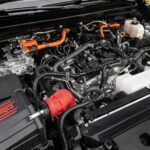The automotive world was recently abuzz with the potential mega-merger between Japanese giants Nissan and Honda. A tie-up of this magnitude promised to reshape the industry, creating a formidable force to combat rising competition, particularly from Chinese electric vehicle (EV) manufacturers. However, recent reports confirm that these ambitious merger talks have unfortunately collapsed, leaving many to question what went wrong and what the future holds for both companies.
The proposed merger aimed to consolidate the strengths of Nissan and Honda, along with junior partner Mitsubishi, to create an automotive powerhouse capable of challenging global leaders like Toyota, Volkswagen, and Hyundai. At a potential valuation of $60 billion (£48 billion), this new entity would have instantly become the world’s fourth-largest automaker by sales volume. The primary driver behind these discussions was the intensifying competition, especially in the rapidly evolving electric vehicle market, where Chinese brands like BYD are gaining significant ground.
The Stumbling Blocks: Why the Nissan Honda Merger Failed
While the strategic rationale for a Nissan And Honda Merger seemed compelling, the complexities of such a massive undertaking proved insurmountable. Several key factors contributed to the breakdown in negotiations.
One of the primary points of contention was the structure of the merged entity and the roles each company would play. Reports suggest a significant disagreement arose concerning Nissan’s position – whether it would be an equal partner or operate as a subsidiary under Honda’s leadership. Honda, currently in a stronger financial and market position, entered the talks from a position of relative strength. They likely envisioned a merger where they would take the lead, especially considering Nissan’s recent struggles.
Nissan, once Japan’s second-largest automaker, has faced considerable headwinds in recent years. Slowing sales and internal turmoil, particularly following the arrest and subsequent escape of former chairman Carlos Ghosn amidst allegations of financial misconduct, have weakened the company. Honda’s CEO, Toshihiro Mibe, had publicly stated that any merger would be contingent on Nissan successfully completing its “turnaround action,” indicating concerns about Nissan’s current state.
The concept of a “merger of equals” is deeply ingrained in Japanese business culture. As Jesper Koll from Monex Group pointed out, the pressure to present such a merger as balanced and equitable is immense. Assigning a clear leadership role to one party could be perceived as offensive by the other, creating a significant cultural and political hurdle to overcome. In essence, the inability to agree on a clear power dynamic and organizational structure proved to be a deal-breaker.
Expert Opinions on the Failed Automotive Merger
Industry analysts had mixed reactions to the news of the collapsed merger talks. Karl Brauer, an analyst from iSeeCars.com, noted that the failure wasn’t entirely unexpected, stating, “Plenty of automotive mergers have not worked out, and this one had as much potential for disaster as it did to help both brands.” This highlights the inherent risks and challenges associated with large-scale mergers in the automotive sector, where integrating different corporate cultures, product portfolios, and operational processes can be incredibly complex.
Some analysts, like Jesper Koll, even suggested that Honda might have been better off avoiding the merger altogether. The sentiment was that Honda, a consistently strong performer, could have been burdened by having to “bail out an ugly duckling” in Nissan, implying that the merger might have diluted Honda’s strengths rather than creating synergistic gains.
The Road Ahead for Nissan and Honda
With the merger off the table, both Nissan and Honda must now navigate the increasingly competitive automotive landscape independently. Nissan, in particular, faces an uncertain future. The company has already implemented cost-cutting measures, including job reductions and executive pay cuts, to address its financial challenges.
However, there may be a silver lining for Nissan. Taiwanese tech giant Foxconn, known for manufacturing Apple iPhones and advanced computer chips, has expressed interest in acquiring Nissan shares for potential collaboration. Foxconn’s chairman, Young Liu, also mentioned potential cooperation with Renault, Nissan’s long-time partner. Renault, which holds a significant stake in Nissan, reportedly found the terms of the proposed Honda-Nissan merger “unacceptable,” suggesting they intend to remain a key player in Nissan’s future.
For both Nissan and Honda, the imperative to innovate and adapt in the face of growing competition, especially in the electric vehicle market, remains as strong as ever. While a merger could have offered economies of scale and shared resources, their individual paths forward will require strategic partnerships, technological advancements, and a keen understanding of evolving consumer demands in the global automotive industry. The failure of the Nissan and Honda merger underscores the immense challenges and complexities facing established automakers as they navigate a rapidly changing and intensely competitive market.
